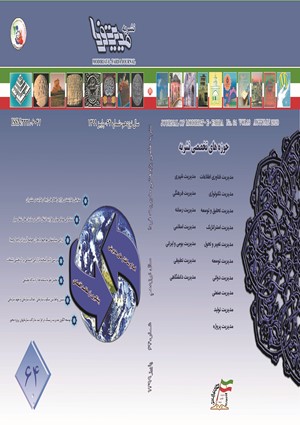تبیین انرژی سازمانی بهره ور با استفاده از تحلیل عوامل میدان نیرو
محورهای موضوعی : مدیریت استراتژیکعلیرضا حسین بیگی 1 , سعیده نصرت ابادی 2 , عباس شول 3 , حسین آرمان 4
1 -
2 - دانشگاه آازد اسلامی واحد نی ریز
3 - دانشگاه ولی عصر(عج) رفسنجان
4 - دانشگاه آزاد اسلامی واحد نجف آباد
کلید واژه: انرژی سازمانی بهره ور تحلیل میدان نیرو عملکرد سازمانی,
چکیده مقاله :
انرژی سازمانی منبعی تجدید پذیر است که مبنایی برای سنجش عملکرد سازمانی میباشد که سطح و شدت آن میتواند بر عملکرد کارکنان اثرگذار باشد. هدف از این تحقیق شناسایی عوامل وادارنده و بازدارنده انرژی سازمانی بهره ور در قالب تحلیل میدان نیرو میباشد. در این تحقیق با استفاده از روش تحلیل محتوای کیفی، از 17 نفر از خبرگان اداره امور شعب بانک ملی استفاده شد. نتایج این تحقیق اکتشافی نشان داد که عوامل اصلی وادارنده انرژی سازمانی بهره ور شامل شناخته شدن، حمایت مدیریت، پاداش، و اعتماد بودند. عوامل اصلی بازدارنده انرژی سازمانی بهره ور نیز شامل قوانین دست و پاگیر، بی نظمی ، کمبود منابع ، و عدم تعادل بین کار / زندگی بودند. در ادامه پیامدهای این یافتهها نیزمورد بحث قرار گرفته است.
Organizational energy is a renewable resource that is the basis for measuring organizational performance whose its level and intensity can influence on employee performance. The purpose of this study is to identify the factors that inhibits and forces the productive organizational energy in the form of force field analysis. In this study, 17 experts of the office of Melli Bank branch affaires were used by qualitative content analysis method. The results of this exploratory study showed that the main factors of driving productive organizational energy included recognition, management support, reward, and trust. The main barriers to productive organizational energy were also cumbersome laws, disorder, lack of resources, and work / life imbalances. The implications of these findings are discussed.


